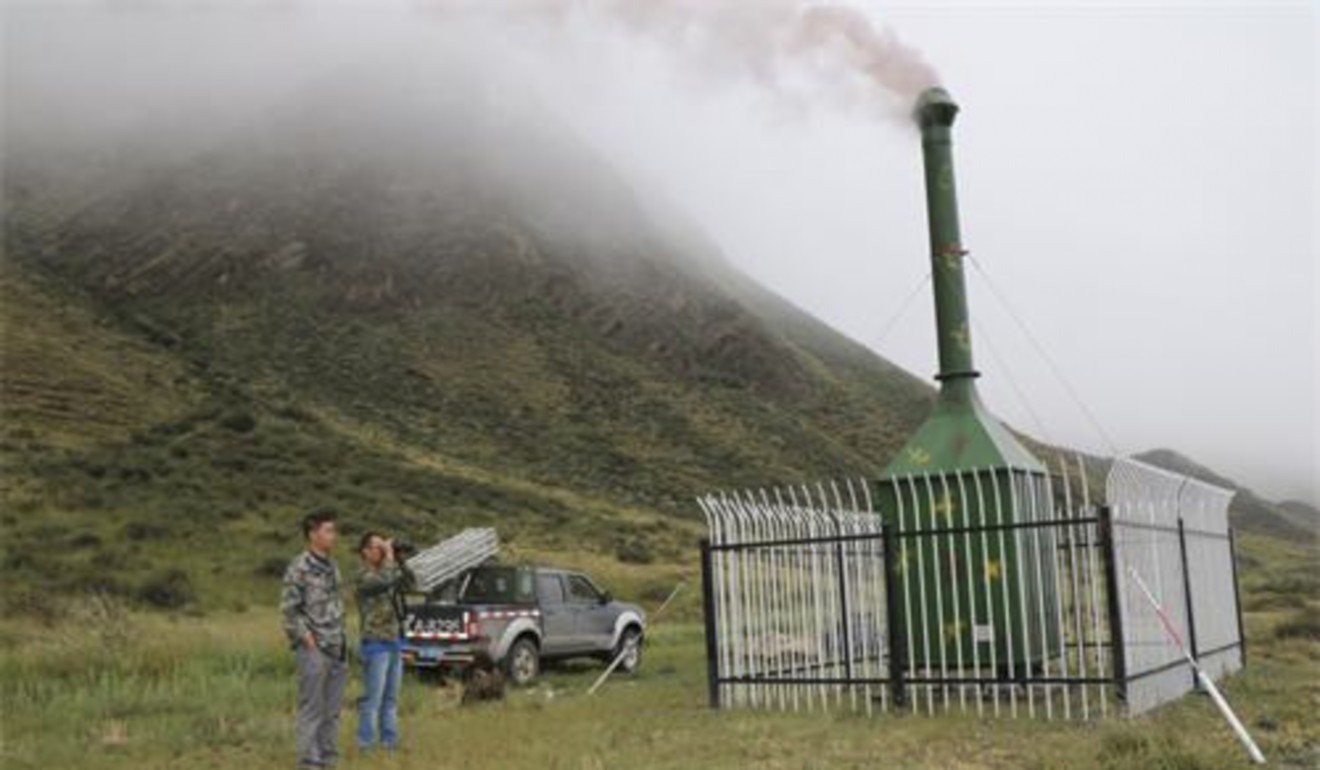[ Envirowatchers ] [ Main Menu ]
16582

From: Alan, [DNS_Address]
Subject: In a climate crisis, is geoengineering worth the risks?
URL: https://www.sciencenews.org/article/climate-change-crisis-geoengineering-worth-risks
|
Hoping to supplement the water supply to Mumbai, India, in 2010, city managers conducted four cloud seeding experiments over nearby water bodies. Aircraft spread dry ice or tiny silver iodide particles into the upper parts of clouds to induce rain. The results were inconclusive. More research on such tech as ocean seeding and space mirrors is needed, some scientists say Geoengineering ideas — tinkering with the climate to delay or halt the worst effects of global warming — have been around for decades. Few such ideas have progressed past the thought experiment stage, due in part to concerns that the cure could be worse than the disease. But as dire warnings about climate change’s impacts increasingly dominate the news, geoengineering may once again be getting a closer look. “We should investigate geoengineering in case we can’t change our behaviors fast enough to ward off the worst of climate change,” Democratic presidential candidate Andrew Yang notes on his campaign website. Yang’s campaign, alone among the candidates, proposes funding large-scale government research into massive climate intervention projects such as giant solar radiation-reflecting space mirrors or seeding the ocean with iron to promote blooms of carbon- sequestering algae. Not everyone is sure this is a good idea. When it comes to ocean seeding, for example, “there is considerable uncertainty and disagreement … whether this would do more harm than good,” says David Karl, an oceanographer at the University of Hawaii at Manoa. Vast algal blooms could alter the geochemistry of the deep ocean, he adds. “It is with great caution that anyone should be deliberating altering the nutrient balance of the sea for any reason.” Similarly, proposals to tinker with incoming solar radiation to cool the planet might significantly shift weather patterns and negatively affect crops. What hints scientists do have about the possible effects of geoengineering come from “natural experiments” such as massive volcanic eruptions that briefly but intensely alter atmospheric or ocean conditions (SN: 9/6/19). Despite decades of discussion and simulating, or modeling, the impact of human-made geoengineering projects, there are still few real-world data — and there is little funding available for scientists interested in obtaining more data. Reconsidering research That dearth of observational data is an argument for at least funding new research, says Ken Buesseler, a chemical oceanographer at the Woods Hole Oceanographic Institution in Massachusetts. “I don’t think we have enough information to really completely model those longer larger-scale effects until we do those experiments.” Many scientists agree that the climate crisis is so severe at this point that geoengineering should at least be on the table, albeit with caveats. In October 2018, the National Academies of Sciences, Engineering and Medicine convened a panel to consider how to create a formal research agenda specifically for solar geoengineering, which includes potentially planet-cooling strategies such as adding aerosols to the stratosphere (SN: 8/8/18) or modifying or brightening clouds to reflect and scatter light. That research agenda, the Academies noted, must include protocols, risk analyses and technological feasibility studies. Rest at link |
16618
From: eaamon, [DNS_Address]
Subject: Re: In a climate crisis, is geoengineering worth the risks?
|
they may have used geoengineering (cloud seeding) to kill the hurricane before it hit Trump's resort. but it is the other project that worries me. like David Keith putting stuff into the atmosphere to block the sun. so what is he putting up there sulfur dioxide that falls back and creates acid rain or is it silicon dioxide that is small glass particles that you will breath in destroying your lungs. one thing for sure. one might kill you. second problem is if the decide to put it all very much higher in the atmosphere, higher than a plane can fly. and the project has the opposite effect/ fails tell me how do you remove it? the other thing that really worries me is the military has in their possession a phased array radar that can generate enough heat to kill off any severe storm. I watched it as it hit two what could have been devastating storms. only question; is it right to mess with mother nature? rains needed will never get to where it was needed to balance the earth. so tell me how many countries are doing the geoengineering, do you know? for one it is not worth the risk! |
Responses:
[16619]
16619

From: Alan, [DNS_Address]
Subject: Re: In a climate crisis, is geoengineering worth the risks?
|
China for sure as they are investing in and buiding many large geoengineering projects. Easily done where people are kept ignorant and even if they are fully aware of what's going on they have no right to protest. Plus neigbouring countries can't stop what's going on without risking a resource war. Search for their use of chemical furnaces (cheaper to operate than using aircraft) 500 burners have been deployed on high altitude alpine slopes in Tibet A single chamber can form a strip of thick clouds stretching across more than 5km. The chambers should be able to operate in a near-vacuum for months, or even years, without requiring maintenance. In theory, the chambers could affect the weather and even the climate in the region if they are built in large enough numbers. But they might not work as perfectly in real life, according to the researcher. 
|
Responses:
None
[ Envirowatchers ] [ Main Menu ]